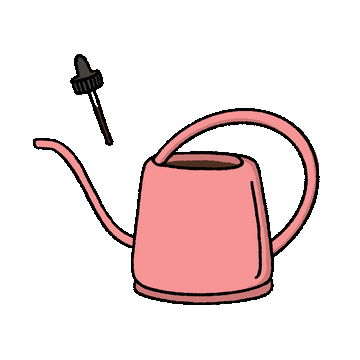You've just been gifted a new plant. It's looking incredible, now all you have to do is keep it alive. But there is no label, and the friend that gifted it to you is just as clueless about plants as you are. Time to throw on your Deerstalker (shout out to the Holmes fans) and get sleuthing.
This blog aims to provide you with a few tips to help identify a plant, without using an app (thoughts on this later)
Why Identify?
Each plant is going to have its own requirements to live a long, lush life. Understanding what your plant is lets you find out more about its light, water, nutirient requirements. Knowing a plants name leads to knowing where that plant is native to, what pests and diseases it is susceptible to, how much humidity it likes and if is toxic to pets and/or humans.
Identifying a plant allows you to give it the ideal potting mix, the correct amount of fertiliser and ensure its getting enough light. Different plants have different needs. Yes - light, water, nutrients are all essential, getting the right amount of each is where the real success is.
App Much?
There are a heap of plant identifying apps out there. Some are great, some are rubbish. But we haven't come across any that we would be commfortable recommending. The problem with the app is that when they get it wrong, you can do some real damage to your plant (Think about how different things would go if your Peace Lily is identified as a Cast Iron Plant...)
For this reason we're going to advocate hard for the self-identification, or at least offer a few tools for you to take to you local plant shop and get an expert to help you out.
Key Areas
Below are a few of the biggest tell-tales for plant identification. Even if they don't narrow down the name, just figuring out the family will help in your subsequent plant care. Or you can use what you've got and take it to google (see below).
Leaves
Most of our Indoor Plants are what we'd describe as foliage plants. That is, its all about the foliage and not so much about the flower or stem. Think about it - Monstera deliciosa, Calathea orbifolia, Spathiphyllum spp., Ficus lyrata - all big destinctive foliage. The leaf of a plant can tell you alot about where it comes from and what it needs, and its the most obvious place to start the identification process.
Leaf parts - when describing a leaf its good to know the different parts. There are three main parts you want to look at when describing and identifying a leaf:
The Blade: The largest and most obvious part. Often (but not always) flat.
The Petiole: The small stalk linking the blade to the stem of the plant. Its not always present (this is a clue in itself!)
The Stipule: A small, leaf-like apendage just below the petiole. Not always present, but its another usefull identifier.

Leaf Shapes - When talking leaf shapes, we're mostly looking at the blade. Accurately describing the shape of the blade will help if your asking someone else for help, or even just when throwing into google. Remember - the more accurate your desription, the more accurate the response will be.
Below is an illustration of some of the more common leaf shapes.

Leaf Arrangements - Lets keep narrowing it down. How are the leaves arranged? Are the alternate, opposite or whorled?

Leaf Forms - Finally, there is the leaf form. This is getting pretty technical, and will not always be neccessary. See the illustration below to take your leaf-describing to Plant Master level.

Leaf Size, Colour and Texture - This is pretty straightforward and won't require our designer whippin up another drawing, but its just as important.
When looking at the leaf, pay attention to its size. Large, medium and small works ok but if you can offer something a little less subjective (like a measurement), that is generally preferable.
Same goes for colour. Is it dark green with a purple underside. Is it variegated (splotches of different colours), is it yellow or pale green? Again, be as descriptive as possible.
Also try to look at the leaf texture. It might be smooth and glossy, or perhaps it has pubescent (fine hairy) or rubbery foliage.
The more information you can gather will give you the best chances of accurately identifying your plant. Sometimes you won't need it all (if someone comes up to you and says 'large green leaves with holes, chances are they'll be talking Monstera), but it never hurts to have more information at the ready.
Flowers
Flowers can be a fantastic way to determine what plant you have. Considering indoor plants are not known for their floral displays, if there are flowers present it can be a good short cut to identifying. The big questions to ask here include
- How big is the flower?
- What colour is the flower?
- Does it have a bract (modified leaf?)
- Does the flower have a scent?
- Does it bloom year round?
- How many petals does the flower have?
We've included an illustration of flower parts here too for reference. Again, this might not be neccesary but if there are things that stand out, it'll help!

Google It
Yes we know this seems a little contrary considering we just rubbished plant ID apps, but google can be a very useful tool after you've taken as much information as possible from the above.
Imagine you've just been gifted this plant:

You have no idea what is is or how it should be cared for, but you are able to describe it.
Start with the foliage. It has lanceolate, variegated leaves with green white and pink colouring. Lets throw that into google.

No luck on the first search, so we'll need more information. Let's add 'indoor plant' to the search.

Happy days we've found something. Clicking through the image to the link comes up with a name - Stromanthe sanguinea 'tricolor'

Now we just need to make sure that's correct. Never trust the first name that comes up. The internet is riddled with misiformation so make sure you are confident in your identification. Next step is to google the name and see what comes up!

Think it is safe to say we've hit the money. Now all you need to do is reach out to your favourite horticulturalists and ask for their advice on how to care for it!



Leave a comment